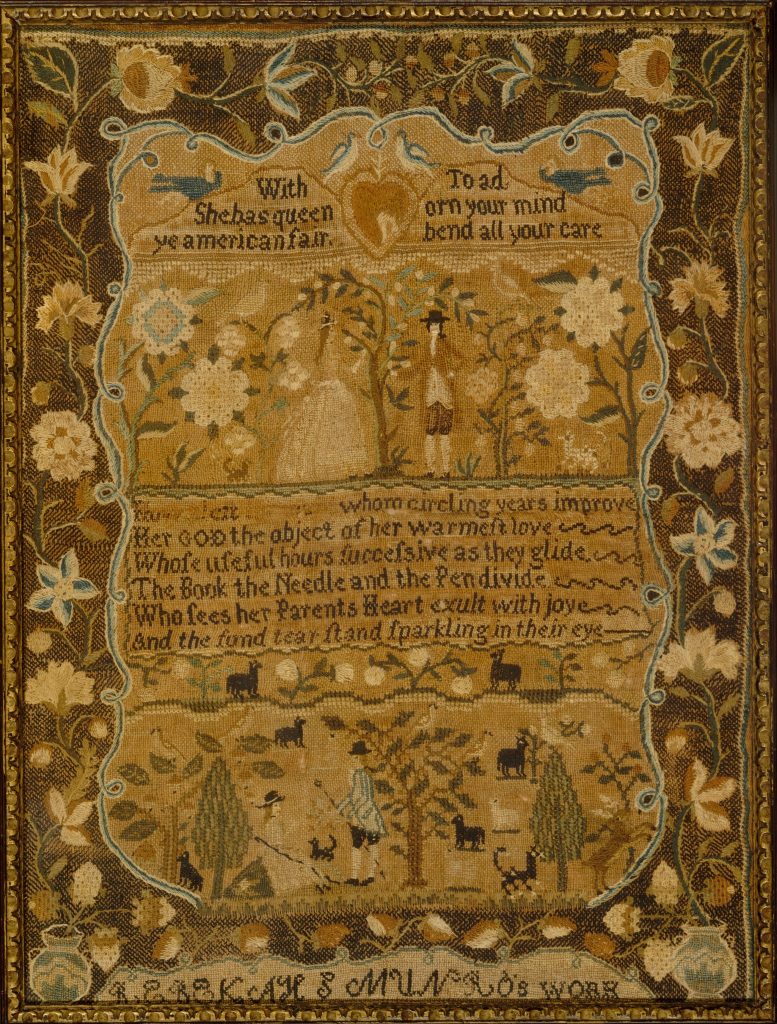
Embroidered Sampler, by Rebekah S. Munro, Rhode Island, 1791. Held by The Metropolitan Museum of Art in New York City.
For decades, young girls created a sampler to show their skills and knowledge. This particular sampler features a variety of scenes, decorative elements, and text embroidered onto the fabric. A product like this was equivalent to today’s final exam or essay at the end of a school year. What does this sampler tell us about Rebekah Munro, and other girls who grew up during the late 18th century?
Rebekah was 11 years old when she completed this embroidery project. The verses that Rebekah chose to include on her sampler indicate that she, and likely her parents, valued education. The inscription reads:
With
Sheba’s queen
ye american fair
To ad / orn your mind
bend all your care
[How blest the maid] whom circling years improve
Her GOD the object of her warmest love
Whose useful hours successive as they glide
The Book the Needle and the Pen divide
Who sees her Parents Heart exult with joy
And the fond tear stand sparkling in their eye.
Unlike so many things made by girls, we know who made the sampler because she got to sign it: REBEKAH S MUNRO’S WORK.
These verses were somewhat common in samplers of this era. This tells us that education for girls was becoming more common and valued in America. Before this time, it was typical for boys to attend school with a focus on academics, while girls learned homemaking skills and acquired only basic knowledge of reading and writing.
It is interesting to wonder what story is being told by the images embroidered on this sampler. The decorative flowers along the left and right side are nearly symmetrical, with a few subtle differences. The darker colors of these border decorations provide a nice frame for the content in the center of the sampler. The picture in the top portion seems to depict a courtship, or maybe even a wedding. Flowers, birds, and small animals surround the couple in the scene – things that often symbolize fertility. The scene in the bottom half looks more like an autumn setting featuring the same couple but with more animals and mature trees.
Was Rebekah dreaming of her future when she created these designs? We might never know the full story behind her needlework, but it does provide us a small glimpse into the life of an adolescent girl at the turn of the 19th century.
-Hillary Rose
Education Advisor
Girl Museum Inc.
This post is part of our 52 Objects in the History of Girlhood exhibition. Each week during 2017, we explore a historical object and its relation to girls’ history. Stay tuned to discover the incredible history of girls, and be sure to visit the complete exhibition to discover the integral role girls have played since the dawn of time.
